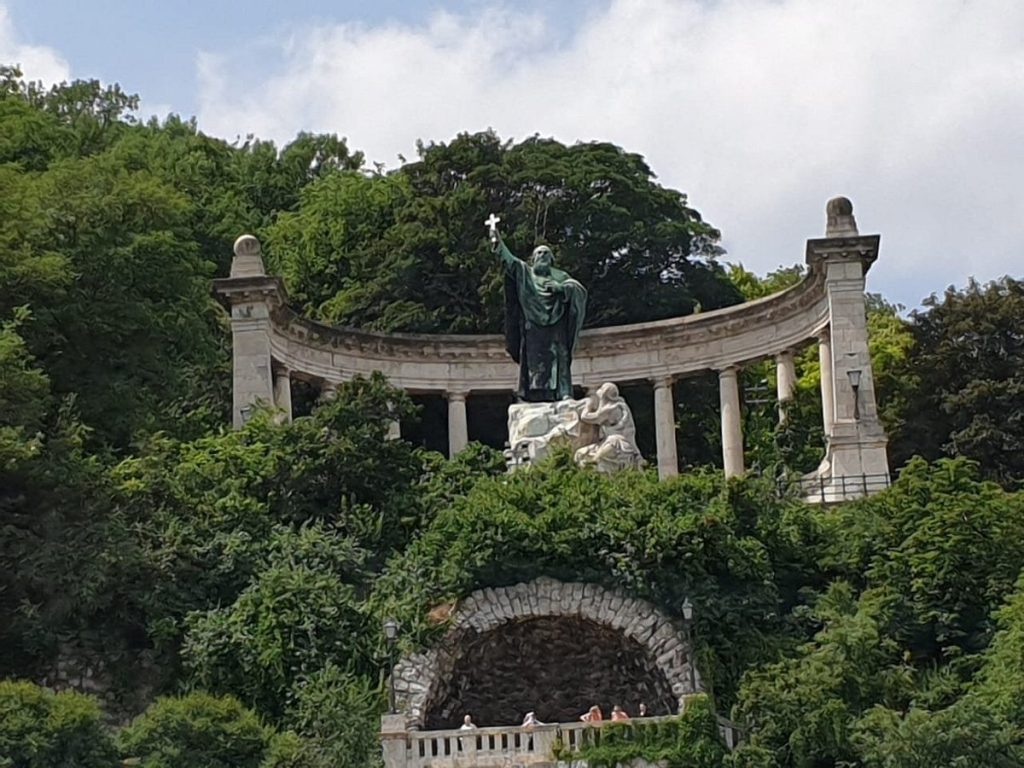Szent Gellért Monument: Budapest’s Revered Figure
Introduction
Celebrate the legacy of Szent Gellért with his monumental tribute overlooking Budapest. Perched on Gellért Hill, this striking statue pays homage to the bishop whose life and martyrdom left an indelible mark on the city’s history. The Szent Gellért Monument isn’t just a statue; it’s a testament to the city’s cultural and spiritual heritage.
Historical Background
The Life of Szent Gellért
Szent Gellért, also known as Saint Gerard of Csanád, was a Venetian bishop who played a significant role in the Christianization of Hungary in the 11th century. Arriving in Hungary in 1015, he mentored the young Prince Imre, the son of King Saint Stephen, Hungary’s first Christian king. Gellért’s missionary work and dedication to spreading Christianity earned him a revered place in Hungarian history.
Martyrdom and Legacy
In 1046, during the pagan uprising, Szent Gellért was martyred by being thrown from the cliffs of Gellért Hill into the Danube River. His martyrdom cemented his legacy as a symbol of faith and devotion. He was canonized in 1083 by Pope Gregory VII, and his story continues to inspire generations.
The Monument
Design and Structure
The Szent Gellért Monument, erected in 1904, is a striking statue that stands prominently on Gellért Hill. The monument features a towering statue of Szent Gellért holding a cross, symbolizing his missionary work and unwavering faith. A cascade of water flows into a pool at the monument’s base, adding a dynamic element to the serene surroundings.
Symbolic Elements
The statue of Szent Gellért is designed to convey strength, resilience, and spiritual conviction. His outstretched arm holding the cross signifies his role in spreading Christianity, while the flowing water symbolizes purity and the eternal flow of faith. The monument’s elevated position on Gellért Hill further enhances its symbolic significance, offering a place for reflection and reverence.
Visitor Experience
Panoramic Views
One of the most compelling aspects of visiting the Szent Gellért Monument is its breathtaking panoramic views. From its vantage point on Gellért Hill, visitors can admire the Danube River‘s sweeping vistas, Budapest’s sprawling cityscape, and iconic landmarks such as the Hungarian Parliament Building and the Chain Bridge. The monument’s location makes it a perfect spot for photography and quiet contemplation.
A Place for Reflection
The Szent Gellért Monument provides a serene and contemplative environment for visitors. Combining the historical significance of Szent Gellért’s life and the tranquil setting encourages reflection on themes of faith, devotion, and the passage of time. Benches and shaded areas around the monument allow visitors to sit and absorb the atmosphere.
Connecting with Budapest’s Heritage
Visiting the Szent Gellért Monument offers a unique opportunity to connect with Budapest’s cultural and spiritual heritage. The monument is a testament to the city’s deep-rooted Christian traditions and the enduring impact of historical figures like Szent Gellért. Whether you’re interested in history, religious symbolism, or simply seeking a deeper understanding of Budapest’s identity, the monument provides a meaningful experience.
Practical Information
Location and Accessibility
The Szent Gellért Monument is located on Gellért Hill, one of Budapest’s most prominent natural landmarks. The hill is easily accessible by public transportation, including buses and trams. For those who enjoy walking, several trails lead up to the monument, offering scenic routes through the lush greenery of Gellért Hill.
Visiting Hours
The monument is accessible year-round, with no specific visiting hours. Visitors can explore the site at leisure, making it a flexible and convenient destination for locals and tourists.
Nearby Attractions
In addition to the Szent Gellért Monument, Gellért Hill has several other attractions, including the Citadel, the Liberty Statue, and the Gellért Thermal Bath. Visitors can easily combine a visit to the monument with these nearby sites, creating a comprehensive and enriching itinerary.
Conclusion
The Szent Gellért Monument is a powerful symbol of faith, devotion, and Budapest’s enduring spirit. Whether you’re drawn to history, captivated by religious symbolism, or simply seeking a vantage point to admire Budapest’s beauty, this monument promises an immersive encounter that connects you with the city’s heart. By celebrating the legacy of Szent Gellért, the monument stands as a testament to Budapest’s rich cultural and spiritual heritage, offering visitors a place for reflection, reverence, and connection.
